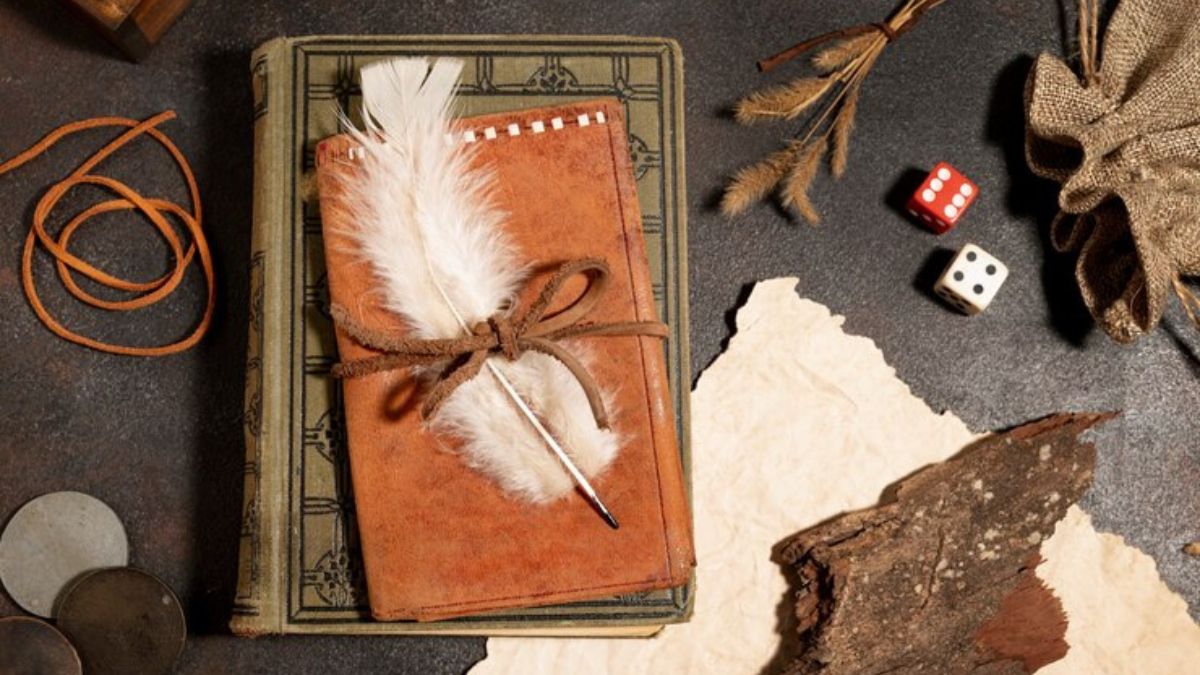GENERAL
How To Compose Your Own Handpan Songs From Scratch

Are you someone with a deep love for music and relaxing sounds? Creating your own melodies has become so much fun and easier with handpan drums. If you’ve fallen for its melodious music, you being a newbie won’t matter. Even if you’re just starting out or have been playing the hang for some time, composing your own music can become one of the most exciting and satisfying experiences ever. In this article, you can learn all about how you can create your songs and enter the world of peaceful and mesmerizing music, right from your heart!
Step 1: Get To Know Your Handpan
Before you jump into the groove and start composing songs, it’s best to take some time to explore the hang drum’s sound. Different types of handpans are tuned to a certain scale, with each note harmonizing beautifully with the others. What you can do is play every note slowly and get yourself familiar with all of the tones, noticing the way they resonate with each other.
You can also listen for natural patterns since you’ll notice that some notes naturally feel like they belong together. Another great technique is to experiment with rhythms by tapping lightly, then with some more force to see how the dynamics change. Consider this step an official “meeting” with your hang instrument. The more you play, the more you’ll understand its unique voice.
Something else that you can do here is try closing your eyes while you play to completely draw your focus on the sound and vibration. It’ll help deepen your connection with the instrument and help you notice nuances that usually go unnoticed. Make sure to play in different environments, like in a quiet room, outside in nature, or with some gentle background noise in the atmosphere.
Step 2: Start With Simple Patterns
Once you’ve become familiar with your instrument, it’s time to look for a starting point for your song. Begin by playing a couple of notes and observe the ones that sound good together. Make sure not to overthink it and let your fingers move naturally on your handpan. Repeat the shorter sequences and tweak them just a bit until you finally find something that sounds good to you.
One great way for you to find a pattern is to set a timer for five minutes and improvise from there. It’s completely okay if you keep making mistakes, just continue playing. Once the timer stops, go back to listen to what you’ve played and choose the parts that you like the most. This helps keep the process exciting and spontaneous, keeping you hooked on song composition.
Step 3: Expand On Your Idea
Once you get your hands on a basic pattern, it can be expanded by changing the rhythm, i.e., playing the same notes slowly and then increasing the speed. Connect different sections smoothly by adding nearby notes. You can introduce depth into the mix by playing some notes softly and the others with intensity. You can always go back and play it again if you feel stuck.
Multiple handpan players also utilize looping pedals to construct layers. However, even without one, you can continue repeating your phrase and explore smaller variations. You can also try reversing the order of the notes by introducing an additional beat or changing the way you strike them. Making those small tweaks can make a massive difference in your journey.
One other useful tip is to experiment with various time groupings, so instead of always playing in sets of four beats, you can try to use five or seven beats for a unique rhythm. Feel free to also switch the order in which you hit the notes because there are many times when only moving your hands differently can completely change the entire feel of your overall melody.
It’s important to remember that taking breaks is also a part of the process, and an essential one at that. You can step away for a while, then come back with fresh ears since this can help you hear your composition in a whole new way. It’s also a good practice to listen to other handpan players or different styles of music to get some inspiration. Anything can spark a new idea!
Step 4: Experiment With Dynamics & Emotion
Good music isn’t all about the notes, it’s actually about how you play them. Make sure to play some notes gently for a calm and relaxing feel, then from here on, you can try more powerful strikes for excitement and energy. Silence is equally as essential as sound, so utilize pauses to the fullest in order to create and bring some emotion and anticipation into the process.
You should also try breathing in rhythm with your handpan playing, so inhale as you lightly tap and exhale once you play with more intensity. This link between breath and music makes the entire handpan playing experience feel a whole lot more natural and expressive.
Step 5: Structure Your Song
You can now shape your ideas and patterns into a complete song. Here’s a simple structure you can follow:
1. Intro – Begin with soft, slow notes to set the mood.
2. Main Theme – Clearly play your core melody.
3. Variation – Change the rhythm or add extra notes.
4. Climax – Build excitement by playing faster or louder.
5. Outro – Slow down, go back to the main theme, and fade out.
This structure helps make your song feel more complete, but you don’t have to exactly follow it. If another format fits your playstyle, then you can go with it. The most important thing is that your composition flows naturally and feels satisfying to you when you play.
Step 6: Record & Reflect
When you play through your entire song a couple of times, make sure to record yourself. Once you listen back, it helps you hear what’s working for you and highlights the areas where you can improve things. Don’t aim for perfection because music is a whole journey. Therefore, your song will naturally evolve the more you play it.
You can record several takes and layer them together with the help of simple recording apps. It’ll help you hear your song’s different angles and enhance the parts you might not have noticed while you were playing the instrument.
Conclusion
Creating your own Cosmos handpan song is among some of the most satisfying and rewarding experiences you can have with this instrument. It doesn’t have to be that complex, you can just start with a simple idea, build around it, and let your emotions pave the way. So, grab your handpan, start playing, and allow the music to flow through you in this song-making journey!
GENERAL
Fiskning: Sustainability and Tradition in Fishing

Introduction to Fiskning
Fiskning, the art of fishing, is more than just a pastime—it’s a rich tapestry woven from history, culture, and nature. As people gather by riversides or cast lines into the ocean’s depths, they engage in an age-old practice that connects them to their ancestors and the environment. This blend of tradition and sustainability defines fiskning in profound ways. In our fast-paced world where modern techniques often overshadow time-honored methods, understanding the essence of fiskning becomes crucial. Join us as we explore its heritage and discuss how these practices can harmonize with contemporary fishing for future generations to cherish.
The History and Tradition of Fiskning
Fiskning has deep roots in many cultures, symbolizing a bond between people and nature. This ancient practice dates back thousands of years when communities relied on fishing for sustenance.
Traditionally, each region developed unique techniques and tools based on local fish species and environmental conditions. From handlines to nets, these methods reflect creativity shaped by necessity.
In Scandinavia, for example, the art of fiskning remains tied to cultural heritage. Fishermen often share stories passed down through generations while out at sea or along riverbanks.
Rituals surrounding fishing also play an essential role in community life. Celebrations mark the opening of seasons with gatherings that honor both tradition and nature’s bounty.
Such customs create a sense of belonging among those who partake in this time-honored activity, reinforcing the lasting significance of fiskning across generations.
The Importance of Sustainability in Fishing
Sustainability in fishing is more than a trend; it’s a necessity. As global populations rise, the demand for seafood increases. This pressure often leads to overfishing, threatening fish stocks and aquatic ecosystems.
Healthy oceans are vital not just for marine life but also for humanity. They regulate climate, provide oxygen, and support livelihoods around the world. When fishing practices damage these delicate environments, we jeopardize future generations’ access to resources.
Implementing sustainable methods helps balance ecological health with economic needs. Practices like catch limits and habitat protection ensure that fishing can continue without depleting essential species.
Focusing on sustainability fosters biodiversity too. A rich variety of fish means healthier waters and stronger communities reliant on these ecosystems. Sustainable fishing isn’t just about today; it’s about securing tomorrow’s food supply while respecting nature’s intricate web of life.
Sustainable Practices in Fiskning
Sustainable practices in fiskning are vital for ensuring healthy fish populations and thriving ecosystems. Fishermen often rely on traditional methods that have been passed down through generations, emphasizing respect for nature.
Many utilize selective fishing techniques. This approach minimizes bycatch and allows juvenile fish to grow before being harvested. It’s a win-win situation: the fishermen protect their future catch while maintaining ecological balance.
Another key practice is seasonal fishing. By aligning harvests with breeding seasons, communities help replenish stock levels naturally. This method supports not just the local economy but also the environment.
Additionally, some fisherfolk engage in habitat restoration projects, like reef building or planting aquatic vegetation. These efforts create shelter and food sources for marine life, promoting biodiversity within the waters they depend upon.
Embracing these sustainable practices ensures that fiskning remains a viable tradition while safeguarding resources for years to come.
Benefits and Challenges of Maintaining Traditional Fishing Methods
Traditional fishing methods offer numerous benefits that go beyond mere sustenance. They foster a deep connection between communities and their environment. Many of these techniques have been passed down through generations, carrying rich cultural significance. This heritage not only reinforces community ties but also preserves local knowledge.
However, maintaining these practices comes with challenges. Modern pressures like overfishing and climate change threaten the ecosystems where traditional fishing flourishes. As fish populations dwindle, reliance on age-old methods can sometimes clash with contemporary demand for efficiency and profit.
Adapting to new realities while honoring tradition is tricky. Fishermen often find themselves at a crossroads, balancing respect for inherited wisdom with the need for sustainable innovation. Navigating this delicate path is essential for ensuring that both culture and ecology endure in harmony.
Incorporating Fiskning into Modern Fishing Practices
Incorporating fiskning into modern fishing practices requires a balance between tradition and innovation. Fishermen can adopt techniques passed down through generations while embracing new technologies.
One way to blend these approaches is by using eco-friendly gear that reduces environmental impact. For example, biodegradable nets could replace harmful plastics, preserving aquatic ecosystems.
Education plays a crucial role as well. Workshops can teach younger generations about traditional methods alongside contemporary strategies. Knowledge sharing strengthens community bonds and fosters respect for both the craft and nature.
Utilizing data-driven tools like fish finders or GPS technology helps fishermen improve their catch efficiency without compromising sustainability. This synergy of old and new enriches the fishing experience.
Community involvement is essential in promoting sustainable practices too. Local initiatives can encourage shared responsibility for maintaining water quality and habitats critical to both traditional fiskning and modern fishing efforts.
Conclusion: Preserving the Legacy of Fiskning for Future Generations
Fiskning is more than just a method of fishing; it’s a cultural heritage that connects communities with their natural resources. As we navigate the complexities of modern life, it’s crucial to preserve the essence of fiskning. This practice embodies sustainability and tradition, teaching future generations respect for nature.
The legacy of fiskning lies in its ability to adapt while maintaining its core values. By embracing sustainable practices and integrating them into contemporary fishing methods, we can ensure this tradition thrives. Communities must come together to share knowledge and techniques passed down through generations, preserving not only fish stocks but also the stories behind each catch.
Emphasizing education around traditional fishing methods fosters appreciation among younger generations. It empowers them to understand ecological balance while honoring age-old customs.
As we look ahead, there is an opportunity—an obligation—to cherish and uphold the spirit of fiskning. Through conscious effort and commitment, we can safeguard this vital part of our cultural identity for years to come.
ALSO READ: The Ultimate Guide to Fishing Boat Decals: Personalizing Your Vessel
FAQs
What is “fiskning”?
Fiskning is the traditional art of fishing that blends cultural heritage with sustainable practices. It connects communities to nature through time-honored techniques and respectful harvesting.
Why is sustainability important in fiskning?
Sustainability ensures fish populations remain healthy, ecosystems thrive, and future generations can continue this cultural practice without depleting resources.
How does fiskning differ from modern fishing?
Fiskning emphasizes respect for nature and often uses selective, low-impact techniques, while modern fishing may prioritize efficiency, sometimes at the expense of ecological balance.
Can traditional methods keep up with modern fishing needs?
Yes, when paired with innovative tools and community efforts, traditional methods can support sustainable fishing while preserving cultural values.
What are examples of sustainable fiskning practices?
Examples include seasonal fishing, using selective gear to reduce bycatch, and participating in habitat restoration like reef or vegetation rebuilding.
GENERAL
Cyanová: Redefining Design with a Purpose

Introduction to Cyanová
In a world where design often feels disconnected from purpose, Cyanová emerges as a beacon of innovation. This brand isn’t just about creating beautiful products; it’s about weaving meaning into every stitch and curve. With an unwavering commitment to sustainability and ethics, Cyanová reshapes the landscape of modern design. Whether you’re searching for unique home decor or fashion pieces that tell a story, this brand invites you to rethink what it means to choose consciously. As we dive deeper into the inspiration behind Cyanová, you’ll discover how this visionary company is making waves in both aesthetics and impact.
The Inspiration Behind the Brand
Cyanová draws its essence from the beauty of nature and the stories embedded in diverse cultures. Each design reflects a deep appreciation for craftsmanship, tradition, and innovation.
The founders traveled extensively, immersing themselves in local customs and artistic expressions. They wanted to create something that resonates on multiple levels—emotionally, aesthetically, and ethically.
This journey led to an understanding that design can serve as a bridge between people and their environment. Every piece tells a story—a narrative woven into fabrics or sculpted into forms.
Cyanová’s mission is rooted in creating not just products but meaningful experiences. The brand seeks to inspire individuals by connecting them with artful creations that celebrate both heritage and contemporary ideals.
Sustainability and Ethical Practices in Design
Cyanová champions sustainability by integrating eco-friendly materials into every aspect of its design process. Each product reflects a commitment to reducing environmental impact, making conscious choices that resonate with environmentally aware consumers.
The brand prioritizes ethical sourcing, ensuring that all components are obtained responsibly. By collaborating with local artisans and suppliers, Cyanová supports communities while minimizing carbon footprints.
Waste reduction is another cornerstone of their philosophy. Innovative techniques turn offcuts and excess materials into beautiful new products. This not only curtails waste but also sparks creativity in the design process.
Transparency plays a vital role in Cyanová’s ethos. Customers can trace the journey of each item from conception to completion, fostering trust and accountability within the brand community.
By marrying aesthetics with ethics, Cyanová sets a new standard for responsible design that’s as appealing as it is purposeful.
Impactful Collaborations and Projects
Cyanová thrives on collaboration, believing that great design is a team effort. This ethos has led to partnerships with talented artisans and innovative brands across various industries.
Projects like the “Eco-Home Initiative” showcase their commitment to sustainable living. By joining forces with environmental organizations, Cyanová develops products that not only look good but also promote eco-conscious lifestyles.
Moreover, collaborations with emerging designers bring fresh perspectives into their collections. Each partnership ignites creativity and pushes boundaries in design.
The brand’s involvement in community-driven projects further emphasizes its mission. Workshops and events foster local talent while raising awareness about sustainability issues.
With every collaboration, Cyanová amplifies its impact—transforming spaces and inspiring change through thoughtful designs that resonate deeply with consumers.
Unique Designs and Products Offered by Cyanová
Cyanová stands out with its distinctive range of products that marry form and function. Each piece is a testament to thoughtful design, reflecting the brand’s commitment to creativity.
From elegant home decor to innovative furniture solutions, every item showcases unique materials and textures. The designs often incorporate organic shapes that invite interaction and evoke emotion.
Textiles play a significant role in Cyanová’s offerings. Handcrafted fabrics are not just visually stunning; they also tell stories of craftsmanship rooted in tradition.
Lighting solutions from Cyanová illuminate spaces while making artistic statements. These fixtures blend modern aesthetics with sustainable practices, creating ambient environments that inspire tranquility.
Accessories add splashes of color and personality to any setting. They serve as conversation starters, effortlessly bridging style with purpose through their eco-conscious production methods.
Future Goals and Expansion Plans for the Brand
Cyanová is on a mission to broaden its horizons. The brand aims to introduce innovative product lines that resonate with its core values of sustainability and purpose-driven design.
Future plans include expanding into new markets, allowing more people access to their unique creations. Cyanová’s vision includes collaborations with local artisans worldwide, enhancing cultural diversity in their offerings.
Additionally, the brand is committed to increasing transparency in its supply chain. This initiative will bolster consumer trust while showcasing ethical production methods.
An exciting goal for Cyanová is to launch educational workshops focused on sustainable design practices. These programs will inspire others and foster a community dedicated to conscious living.
As they grow, Cyanová remains steadfast in creating products that not only look good but also make a positive impact on the world around us. The journey ahead promises innovation infused with responsibility at every turn.
Conclusion: Empowering Change Through Design with Cyanová
Cyanová is more than just a brand; it’s a movement towards meaningful design. With a focus on sustainability and ethical practices, it challenges the status quo of conventional design. The inspiration behind each product tells a story that resonates with consumers who seek purpose in their purchases.
Collaborations have amplified Cyanová’s impact, bringing together creative minds to tackle pressing global issues through innovative projects. This commitment to social responsibility sets the brand apart in an industry often driven by profit alone.
The unique designs offered by Cyanová reflect not only aesthetic appeal but also functionality and ecological mindfulness. Each piece serves as a reminder of what can be achieved when creativity meets conscience.
Looking ahead, Cyanová has ambitious plans for expansion while remaining true to its core values. As they continue to innovate and inspire change, they pave new pathways for future designers and consumers alike.
Through its dedication to empowering positive change, Cyanová stands at the forefront of a design revolution that encourages us all to consider our choices—both in style and sustainability.
ALSO READ: Interior Painting Ideas to Ignite Creativity in Your Home Office
FAQs
What is “Cyanová”?
Cyanová is a design-focused brand that combines sustainability, cultural storytelling, and artistic craftsmanship to create ethical, purposeful products in home decor, fashion, and more.
How does Cyanová incorporate sustainability in its products?
Cyanová uses eco-friendly materials, minimizes waste, and collaborates with ethical suppliers to ensure environmentally responsible design throughout every stage of production.
What makes Cyanová’s design approach unique?
Each Cyanová piece merges aesthetics with meaning—drawing from nature, cultural heritage, and handcrafted techniques to deliver designs that tell a story and inspire connection.
Does Cyanová support local communities or artisans?
Yes, Cyanová partners with local artisans and communities around the world, empowering them through collaborative design, fair trade practices, and visibility in global markets.
What are Cyanová’s future goals?
Cyanová plans to expand globally, launch sustainable design workshops, enhance supply chain transparency, and continue innovating with new product lines rooted in ethics and artistry.
GENERAL
Understanding Evırı: A Unique Cultural Phenomenon

In a world brimming with diverse traditions and unexplored heritage, there are hidden gems that defy easy definition—Evırı is one such phenomenon. Mysterious, rich in meaning, and rooted in both community and symbolism, Evırı is far more than a passing trend or a regional pastime. It’s a living, breathing cultural expression that tells stories, preserves identity, and brings people together in unexpected ways. Whether you’ve stumbled across the term or are on a quest to learn more, this exploration will guide you through the heart of Evırı and why it’s becoming a subject of fascination for cultural enthusiasts worldwide.
What Is Evırı?
At its core, Evırı represents a multifaceted cultural tradition that blends art, community values, and generational wisdom. Though its exact origin may vary by region or community, the term typically refers to a symbolic practice or ritual embedded in local folklore and social customs. It could be expressed through storytelling, music, dance, or even craftwork, depending on the cultural context.
Unlike mainstream traditions with clearly documented origins, Evırı thrives on oral history. It’s passed down not just in words but in movements, emotions, and shared experiences. It’s not something easily found in textbooks—it lives in the rhythm of festivals, in whispered legends, and in the passionate expressions of those who carry its legacy.
Origins Rooted in Tradition
The origins of Evırı can be traced back to ancient communal life—where storytelling, collective rituals, and symbolic practices served as essential tools for survival, identity, and social cohesion. In many cultures, Evırı was (and still is) used to mark life events such as births, marriages, harvests, and even seasonal transitions.
These ceremonies or performances weren’t merely entertainment—they were deeply spiritual, often used to invoke blessings, preserve local myths, or pass on critical values. Each act of Evırı was a moment of connection: between the people and the land, between generations, and between past and present.
Evırı as a Living Art Form
Today, Evırı continues to evolve, especially in communities that strive to retain their cultural identity in an increasingly globalized world. You might encounter Evırı in a rural village in the form of a dance led by elders, or in a modern city through a theatrical reenactment during cultural festivals.
Its art form may take different shapes, but its essence remains: authenticity, expression, and unity. In some regions, artisans create detailed tapestries or costumes tied to Evırı traditions, while in others, musicians keep the spirit alive with ancestral instruments and hauntingly beautiful melodies.
There’s plenty more where that came from—browse our other helpful content!
The Role of Evırı in Community and Identity
One of the most powerful aspects of Evırı is its ability to foster belonging. Unlike more individualistic cultural expressions, Evırı is inherently communal. It invites participation, whether through dance, song, crafting, or storytelling. No one is an outsider when Evırı’s is being celebrated.
It has become a rite of passage for many youths to learn the rituals of Evırı’s from their elders, thereby ensuring that the customs are not lost to time. In this way, it becomes a vessel for language preservation, moral instruction, and emotional healing—particularly in communities that have faced displacement or cultural erosion.
Why the World Is Paying Attention to Evırı
In recent years, Evırı’s has started gaining attention beyond its traditional borders. Cultural anthropologists, documentarians, and even social media influencers are turning their gaze toward this captivating tradition. But why now?
Perhaps it’s the growing global hunger for authenticity in a world flooded with digital noise. Or maybe it’s the increasing recognition of indigenous and lesser-known cultures as invaluable reservoirs of wisdom. Regardless, Evırı offers something deeply human—a chance to pause, reflect, and connect.
It’s also inspiring a new generation of creators. Filmmakers are using Evırı’s-inspired themes in their stories, fashion designers are borrowing motifs from Evırı art, and educators are designing curricula that include its principles to teach empathy and cultural respect.
Challenges in Preserving Evırı
Like many cultural treasures, Evırı faces challenges. As younger generations move to cities or become disconnected from their roots, the risk of cultural dilution increases. Globalization, while offering visibility, also brings the danger of commercialization or misrepresentation.
Additionally, without adequate documentation, much of Evırı’s remains at risk of being forgotten. Efforts are being made by local historians and community leaders to archive stories, record performances, and even digitize rituals for future generations. However, the process is slow and often underfunded.
A Glimpse Into the Future of Evırı
Despite the hurdles, the future of Evırı looks promising—thanks to a growing number of cultural revival movements. Communities are increasingly using digital platforms to showcase their traditions, while also building bridges with other cultural groups facing similar struggles.
Workshops, festivals, and youth programs centered around Evırı’s are sparking renewed interest. In schools, children are learning songs or dances tied to their heritage. In cities, cultural nights are celebrating Evırı alongside other world traditions, creating a rich tapestry of global unity.
Moreover, technology is becoming an ally. Augmented reality apps, virtual museums, and online forums are allowing younger generations to engage with Evırı’s in new, interactive ways—making the old beautifully relevant again.
Final Thoughts: Why Evırı Matters
Evırı isn’t just a tradition—it’s a reflection of human spirit and creativity. It’s proof that culture doesn’t have to fade with time; it can adapt, grow, and inspire across borders. In a time when the world feels increasingly divided, Evırı’s reminds us of our shared need for connection, storytelling, and purpose.
By embracing Evırı’s, we don’t just preserve a piece of history—we ignite something powerful in ourselves: a curiosity to learn, a desire to connect, and a responsibility to honor the voices of those who came before us.
Evırı is more than a word. It’s a window into a world where culture lives, breathes, and belongs to everyone.
Loved this post? You’ll find even more just like it on our blog!

 ENTERTAINMENT3 weeks ago
ENTERTAINMENT3 weeks agoExploring the Kristen Archives: A Treasure Trove of Erotica and More

 LIFESTYLE9 months ago
LIFESTYLE9 months agoThe Disciplinary Wives Club: Spanking for Love, Not Punishment

 GENERAL4 months ago
GENERAL4 months ago5 Factors That Affect Tattoo Removal Success

 TECHNOLOGY9 months ago
TECHNOLOGY9 months agoBlog Arcy Art: Where Architecture Meets Art

 LIFESTYLE2 months ago
LIFESTYLE2 months agoWho Is Sandra Orlow?

 BUSINESS9 months ago
BUSINESS9 months agoBrand Visibility with Imprint Now and Custom Poly Mailers

 HEALTH8 months ago
HEALTH8 months agoHappy Hippo Kratom Reviews: Read Before You Buy!

 HOME IMPROVEMENT9 months ago
HOME IMPROVEMENT9 months agoThe Do’s and Don’ts of Renting Rubbish Bins for Your Next Renovation











